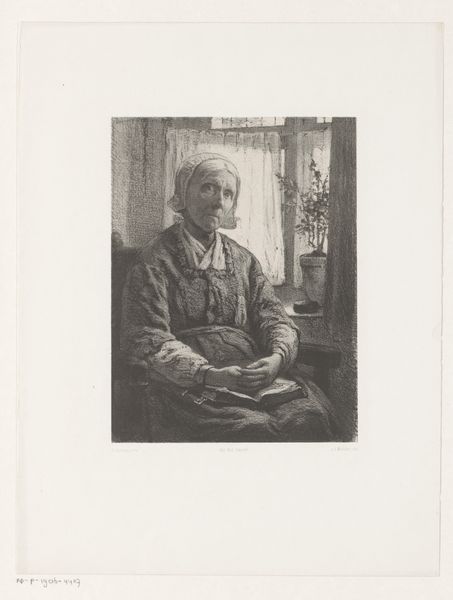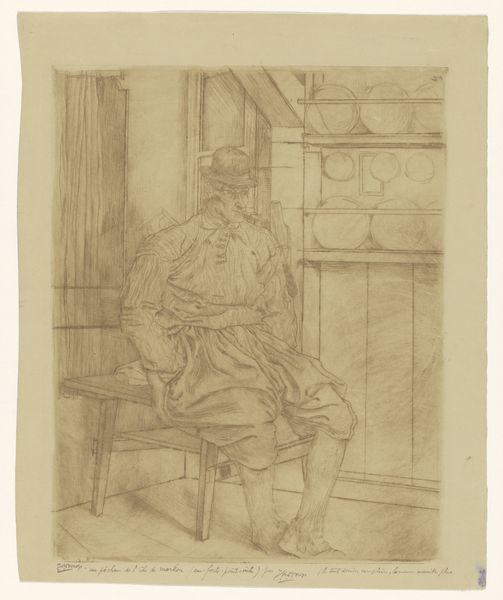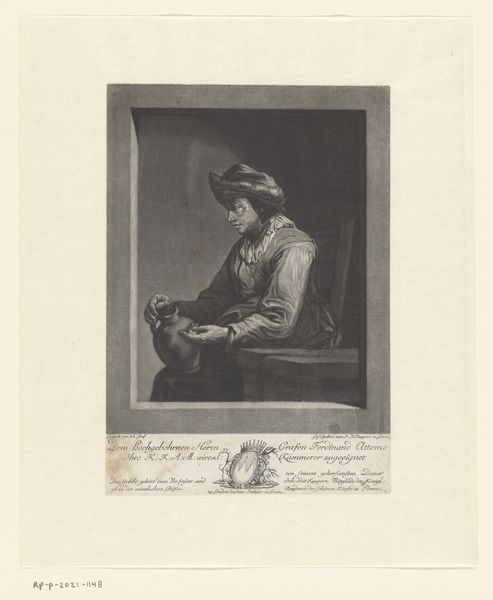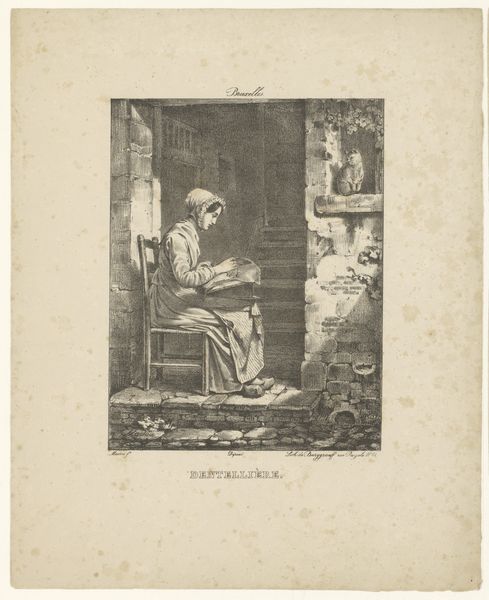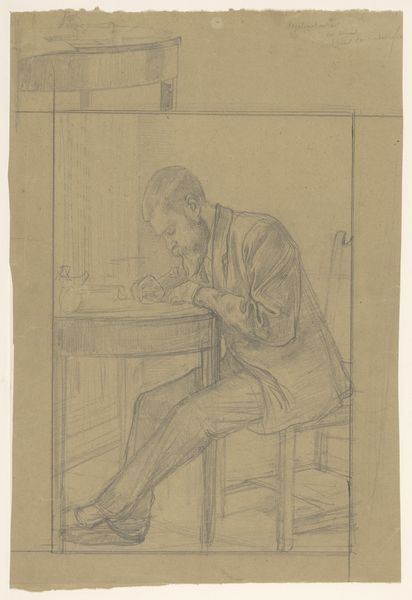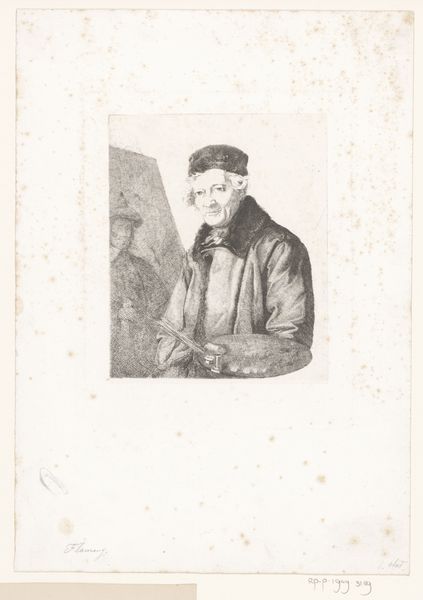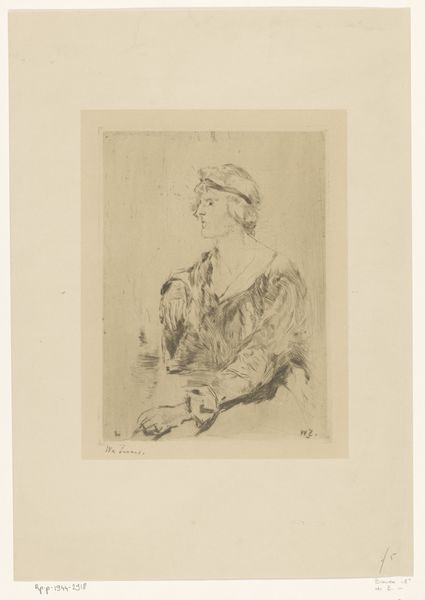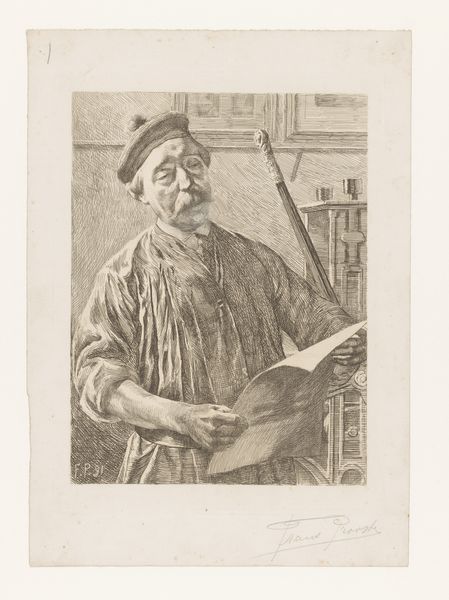
drawing, print
#
portrait
#
print photography
#
drawing
# print
#
genre-painting
#
academic-art
#
realism
Dimensions: height 316 mm, width 240 mm
Copyright: Rijks Museum: Open Domain
Editor: Here we have "Shoemaker at Work in a Workshop," a drawing or print by Charles Mertens, created in 1886. It’s quite detailed, and rather somber in tone, I think. What catches my eye most is the composition: the shoemaker seated, framed by the window and interior details. How do you interpret this work? Curator: Observe the rigorous use of line and form. Mertens orchestrates a composition of interlocking rectangles: the window, the table, the box, the chair itself. The light, falling predominantly from the left, serves to accentuate these geometric divisions and emphasize the textural variation within the limited palette. Notice how the gaze of the subject bisects these compositional forces. What is the effect of such precise articulation? Editor: I see it now, the geometric forms lend it a sense of order, but almost to the point of feeling rigid. And you're right, the shoemaker's face is very central and focused. Curator: Precisely. Mertens avoids sentimentality by prioritizing formal organization. The lines, the tones, the considered arrangement of objects; all construct not simply a scene, but a statement on the nature of labor, framed and considered. Editor: It's interesting how focusing on those elements can really shift the way you see the whole picture. Curator: Indeed. Art isn't always what the artist depicts, but how the artist manipulates form and composition to generate meaning. Editor: I'll certainly remember to look at how an artwork is built as well as what it depicts. Thanks!
Comments
No comments
Be the first to comment and join the conversation on the ultimate creative platform.
